Common dark frame mistakes that ruin your astrophotos include temperature mismatches between dark and light frames, collecting too few calibration frames (aim for 30+), using incorrect exposure durations, and allowing light leaks during capture. You’ll also struggle if you apply dark frames in the wrong processing sequence or reuse outdated calibration frames. Proper dark frame management is essential for noise reduction and preserving subtle details in your deep sky images. Learn these fundamentals to dramatically improve your results.
Temperature Mismatch: When Dark Frames Don’t Match Your Light Frame Temperature
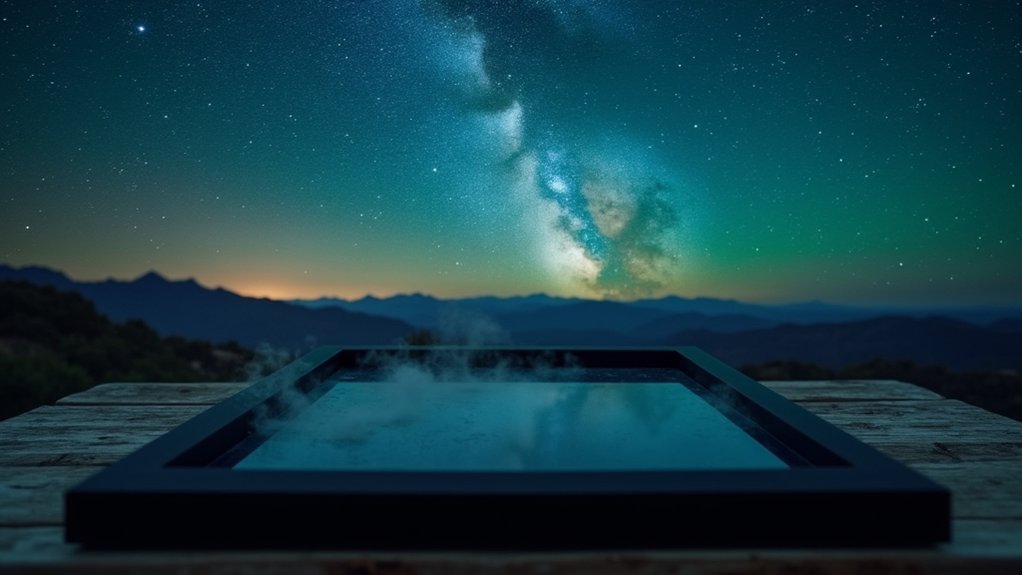
While many astrophotographers focus on exposure settings and framing, they often overlook the critical importance of temperature matching between dark and light frames.
When you use dark frames that are warmer than your light frames, you’re introducing a temperature mismatch that dramatically reduces your noise reduction effectiveness.
Even a few degrees difference alters the dark current pattern, potentially creating more problems than solutions. You’ll notice dark spots and artifacts appearing in your final image, decimating your signal to noise ratio. Remember, hot pixels behave differently at -10°C versus -15°C.
For best results, build a library of dark frames at various temperatures matching your shooting conditions.
This extra effort guarantees your calibration frames accurately subtract the thermal noise present in your light frames, preserving the subtle details in your deep sky images.
Inadequate Dark Frame Quantity: Why One Is Never Enough
Beyond temperature considerations, many astrophotographers make a fundamental error by capturing just a single dark frame for calibration. This inadequate dark frame quantity severely limits your noise reduction potential, as the signal-to-noise ratio improves with the square root of the number of frames used.
- You’ll need at least 15 dark frames for a solid baseline calibration
- Using 30 dark frames still adds approximately 1.6% noise to your final image
- For nearly noise-free results, consider collecting 50+ calibration frames
- Temperature consistency between your dark and light frames remains critical regardless of quantity
When you skimp on dark frames, you’re fundamentally leaving valuable data on the table.
Even in light-polluted environments where other factors affect image quality, a robust library of dark frames remains crucial for ideal astrophotography results.
Timing Troubles: The Hidden Impact of Exposure Duration Errors
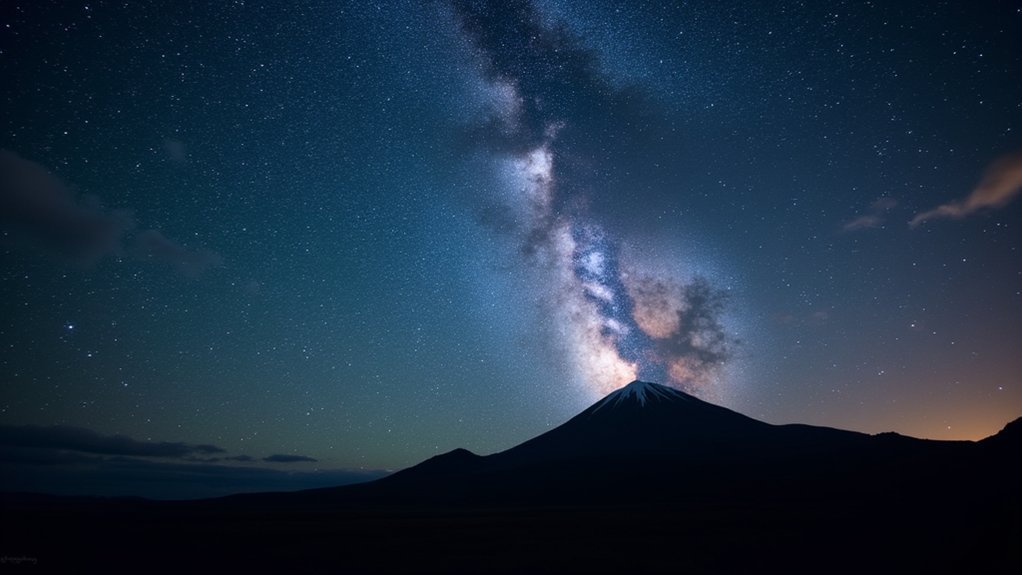
Despite their careful attention to temperature matching, many astrophotographers overlook the critical importance of exposure duration when capturing dark frames.
When your dark frames don’t match your light frames’ exposure time, you’re setting yourself up for calibration failure.
Using shorter dark frame exposures creates an incomplete noise profile, leaving hot pixels and thermal noise inadequately addressed in your final image.
The calibration process depends on identical timing between dark and light frames to accurately subtract noise patterns.
Even with perfect temperature control, timing mismatches can cause overcorrection artifacts that diminish image quality.
Your dark frames should precisely mirror your light frames’ duration—never shorter, never longer.
Light Leak Contamination: Detecting and Eliminating Unwanted Light Sources
Even when you’ve matched temperature and exposure times perfectly, your dark frames can still fail if light manages to sneak into your imaging system.
Light leaks introduce unwanted patterns that compromise calibration integrity and degrade your final image quality.
To detect and eliminate these sneaky culprits:
- Cover your optics and camera with light-tight material (like a black garbage bag) and capture test dark frames to identify persistent patterns
- Inspect for common leak sources: focuser gaps, unsealed connections, and reflections from nearby light sources
- Monitor your ADU levels—they should remain in the low hundreds (≈200) during dark frame capture
- Regularly check and reseal potential leak points after moving or adjusting your equipment
Maintaining ideal imaging conditions requires vigilance against light contamination, ensuring your dark frames provide the clean calibration data your astrophotos deserve.
Dark Frame Library Mismanagement: When Reusing Calibration Frames Goes Wrong
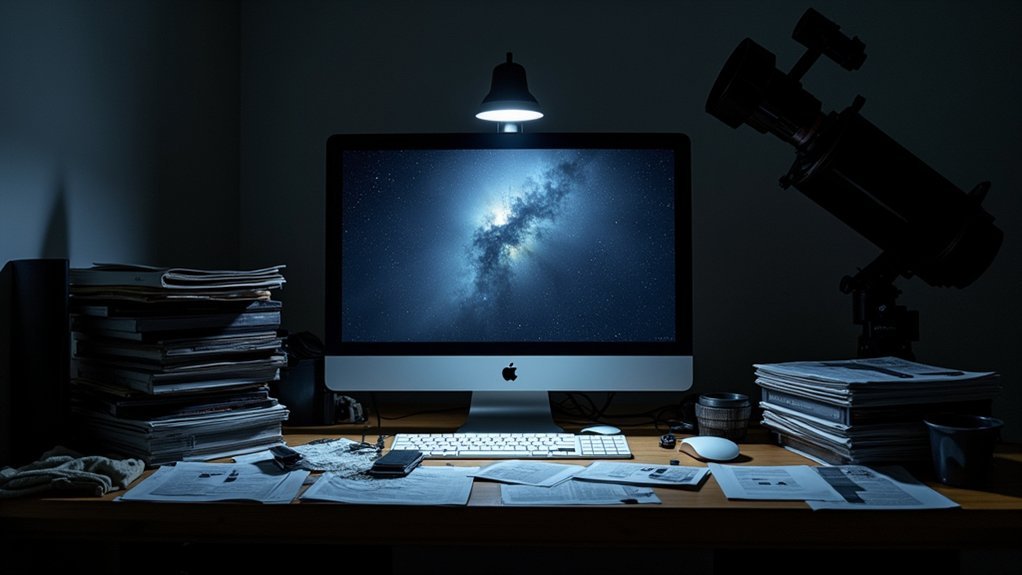
You’re setting yourself up for frustration when your dark frames don’t match the temperature conditions of your light frames, creating overcorrection artifacts that can ruin hours of imaging work.
Your calibration library becomes a liability rather than an asset when you continue using outdated dark frames that no longer represent your camera’s current noise profile.
Maintaining proper temperature documentation and regularly updating your dark frame collection prevents these common pitfalls that plague even experienced astrophotographers.
Temperature Matching Failures
While creating dark frames is a fundamental step in the calibration process, guaranteeing they match the temperature of your light frames is equally critical.
Temperature matching failures represent one of the most common dark frame mistakes that can ruin your astrophotography results. When you use warmer dark frames than your light frames, you’ll introduce excessive thermal noise and create unwanted dark spots in your final image.
- Using dark frames at -5°C when your light frames were captured at -15°C can considerably increase hot pixels.
- Mismatched temperatures lead to improper calibration, either overcorrecting or introducing new noise artifacts.
- Building a dark library with various temperature points (-10°C to -25°C) allows for better matching.
- Regular assessment of your dark library guarantees your calibration frames remain effective as conditions change.
Outdated Calibration Files
Three common pitfalls plague astrophotographers who reuse dark frames without proper management.
First, you’re compromising image quality when using outdated dark frames that don’t match your current temperature conditions, resulting in overcorrection or persistent noise patterns.
Second, failing to maintain sufficient quantity—at least 15 frames—leaves your calibration statistically weak, unable to effectively reduce dark noise and hot pixels.
Finally, neglecting to build a thorough dark frame library across various temperatures limits your ability to adapt to changing shooting conditions.
When your calibration files don’t match your light frames’ exposure settings and temperature, you’re actually introducing new problems rather than solving existing ones.
Regular updates to your dark frame collection, especially after temperature fluctuations, guarantee ideal noise reduction and maintain the signal-to-noise ratio your astrophotography deserves.
Processing Pitfalls: Common Dark Frame Integration Mistakes in Post-Processing
You’ll ruin your astrophotography results if you’re not matching dark frame temperatures to your light frames, creating a processing disaster where noise patterns remain uncorrected or become exaggerated.
Confusion about calibration order can compound these problems, as incorrect sequence application may introduce artifacts rather than remove them.
Properly aligning temperature parameters and understanding the correct stacking sequence aren’t optional techniques—they’re essential steps that prevent the frustrating outcome of wasted hours when processing your night sky images.
Temperature Mismatch Disasters
The most catastrophic dark frame error you can make in post-processing occurs when temperatures don’t match between your light and dark frames. When your dark frames are captured at warmer temperatures than your light frames, you’ll introduce more hot pixels into your calibration process, compromising your image quality instead of improving it.
- Using dark frames from different thermal conditions creates overcorrection artifacts and dark spots across your final image.
- Temperature mismatches exacerbate fixed pattern noise (FPN) and greatly reduce your signal-to-noise ratio.
- Dark frames captured before sensor thermal equilibrium won’t accurately represent the noise present in your light frames.
- Building a temperature-varied dark frame library is essential for proper calibration across different shooting conditions.
Matching temperature between calibration and light frames isn’t optional—it’s fundamental to successful noise reduction in astrophotography.
Calibration Order Confusion
While capturing perfect dark frames is critical, following the correct calibration sequence in your post-processing workflow proves equally vital for noise reduction success. Many astrophotographers apply dark frames at the wrong stage, undermining their effectiveness.
You’ll sabotage your results if you apply dark frames after initial stacking rather than during calibration. This common error prevents proper noise reduction since the stacked image has already averaged the very patterns your dark frames aim to eliminate. Always match dark frames with identical ambient temperature and gain settings as your light frames before integration.
Remember that calibration follows a specific order: bias, dark, flat frames. Skipping this sequence creates inconsistencies that leave fixed-pattern noise intact.
Building a thorough dark frame library organized by temperature ranges guarantees you’ll always have appropriate calibration files available for best noise reduction in your final images.
Frequently Asked Questions
How Many Darks to Take Astrophotography?
You’ll need at least 15 dark frames for basic calibration, but aim for 50 if you want noise-free results. Remember, more darks reduce noise by the square root of their number.
What Do Dark Frames Do Astrophotography?
Dark frames remove thermal noise and hot pixels from your astrophotos by providing a map of your camera’s sensor artifacts. You’ll subtract these imperfections from your light frames during processing for cleaner final images.
Is 10 Dark Frames Enough?
Ten dark frames aren’t enough for ideal results. You’ll get better noise reduction with at least 15-30 frames. The more you use, the cleaner your final image will be. Aim for 50 if possible.
What Are Bias Frames in Astrophotography?
Bias frames are zero-exposure calibration images you’ll take with the shutter closed to capture your camera’s electronic read noise. They’re used alongside dark frames to improve your astrophotography by removing sensor noise patterns.
In Summary
Dark frame errors can devastate your hard-earned astrophotos. You’ll get the best results by matching temperatures precisely, shooting adequate quantities, using identical exposure times, eliminating light leaks, properly managing your dark library, and avoiding processing mistakes. Don’t let poor calibration ruin your night’s work—take the time to master these techniques. Your images will show remarkable improvement with properly implemented dark frames.
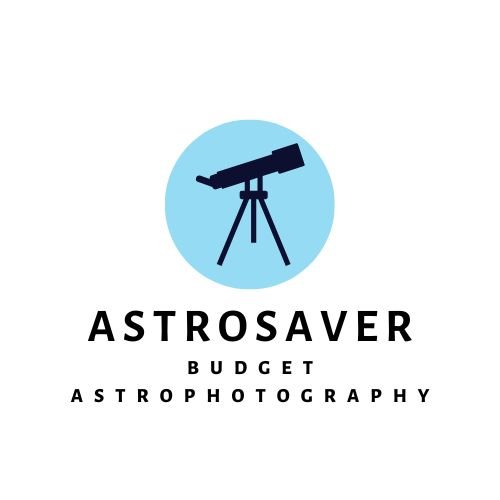

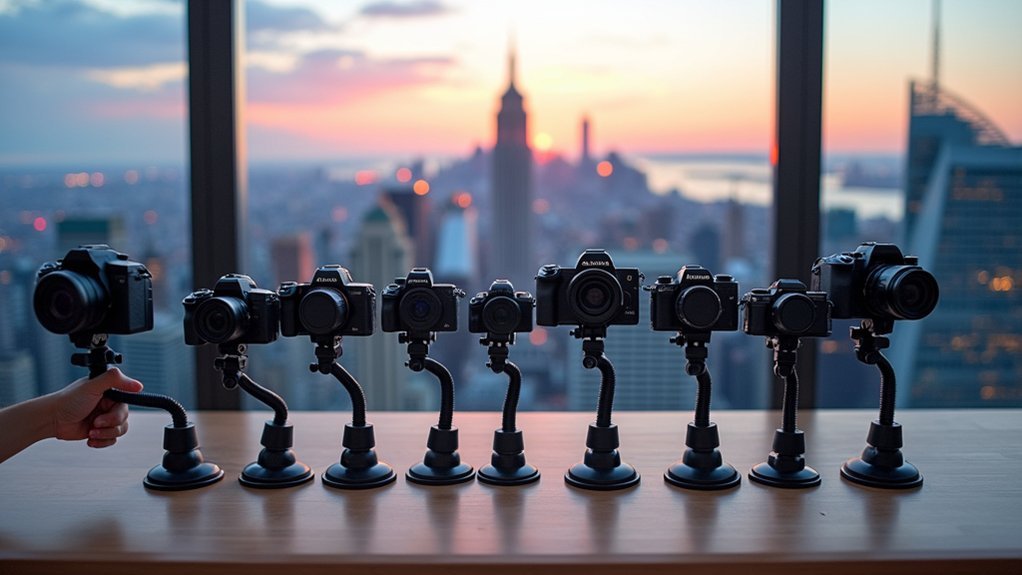
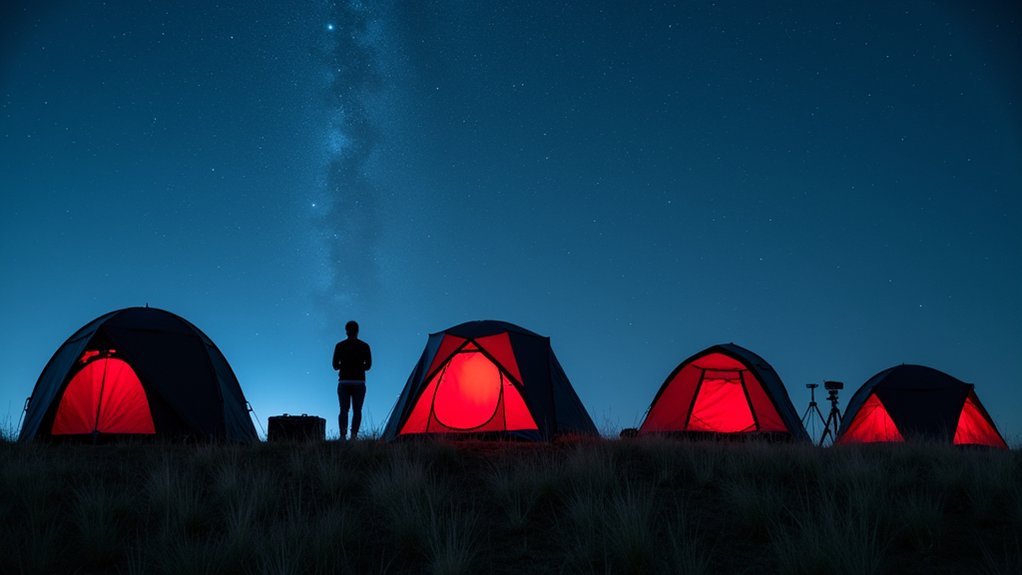
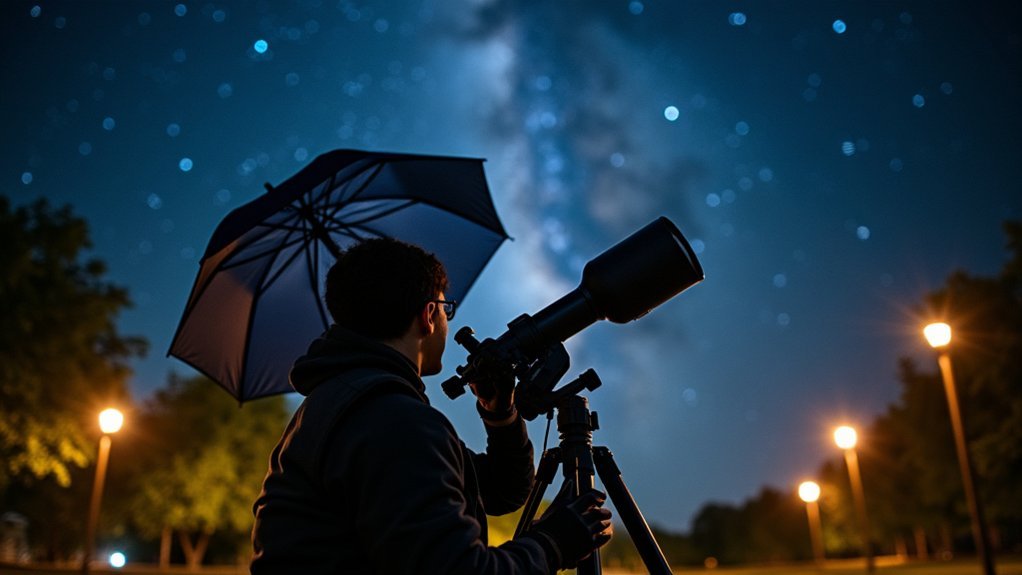
Leave a Reply